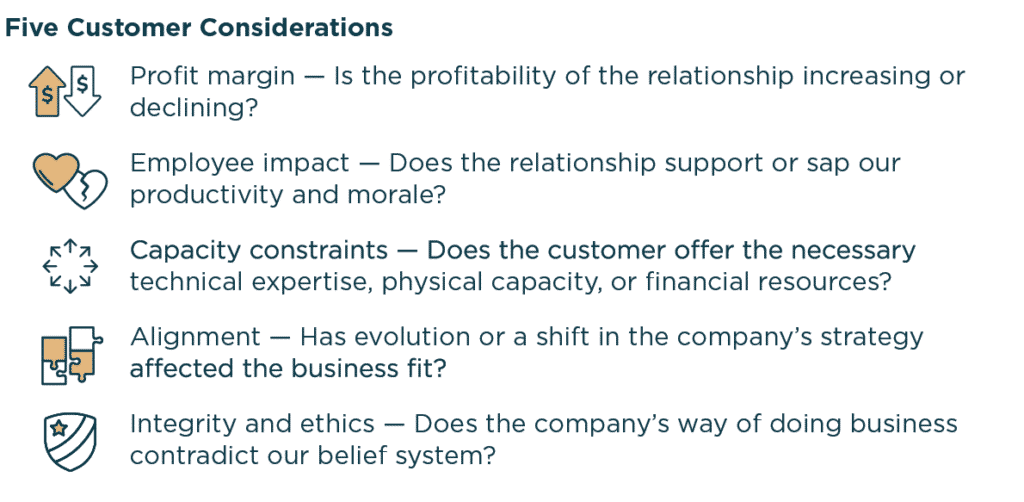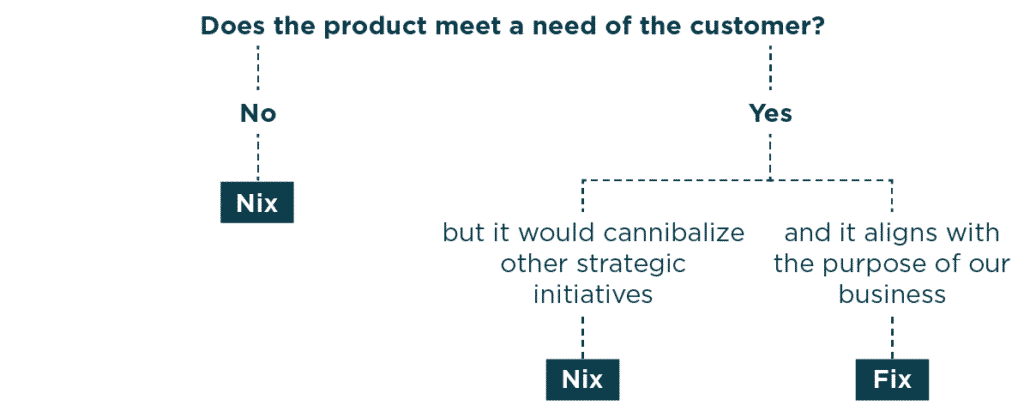The Pruning Principle: How Necessary Endings Lead to Business Growth
Developing the Healthy Practice of Business Pruning
A beautiful garden requires a gardener with a strong pruning hand.
And so it is in business. Healthy businesses require a leader with a good pruning hand. We must constantly tend to the health of the business for it to grow and flourish.
Pruning in business means ending things. Endings are painful—so painful, in fact, that we are inclined to avoid them altogether. But certain things must end for better things to come. It’s an essential practice for our businesses to flourish.
To overcome our inclination for avoidance, we need to normalize necessary endings. And as we grow comfortable with the pruning principle, we can learn when, and how, to apply it in our businesses.
When Businesses Fail to Prune
Business leaders who tolerate unprofitable customers, unhealthy employees, or underperforming products run the risk of small problems growing bigger over time.
- Kodak was the market leader in photographic film in the 20th century. It developed the first digital camera as early as 1975 but dropped it for fear of it cannibalizing its existing film business. It filed for bankruptcy in 2012.
- General Motors was one of the largest companies in the world. Focusing on profits from finance, the business neglected to improve the quality of its product, failed to adapt to changes in customer needs, and didn’t invest in new technologies. It survived but only after a massive bailout from the US government in 2009.
While many factors contributed to the decline of these businesses, it’s clear that critical pruning moments were missed at various stages in the process.
The Pruning Principle
In the gospel of John, Jesus shared the pruning principle as a foundation for growth:
“Every branch in me that does not bear fruit he takes away, and every branch that does bear fruit he prunes, so that it may bear more fruit.”
Jesus’s analogy, taken from the natural world, indicates that pruning is essential for future growth. Leaning into this analogy, it is instructive to understand the three cases in which a gardener will choose to prune.

Dr. Henry Cloud says, “You can’t prune toward anything if you don’t know what you want. You have to figure out what you are trying to build and then define what the pruning standards are going to be. That definition and those standards will bring you to the pruning moments, wherein you either own the vision or you don’t.”
In business, there are three common areas where leaders can consider a necessary ending: pruning unprofitable customers or vendors, pruning unhealthy employees, or pruning underperforming products.
Pruning the Business: Unprofitable Customers or Vendors
While customer retention remains imperative for any business, the pruning principle focuses us on retaining the right customers.
A business may decide to divest itself of certain customers or vendors when the cost to retain the customer exceeds the cost to lose the customer. A series of hurricanes may cause an insurance company to divest itself from certain high-risk customers for fear of massive losses in the future. A restaurant may decide to block a diner due to rude treatment of the staff. An electrician may choose to end its relationship with a low-cost vendor that consistently misses delivery deadlines.
A necessary ending with a customer or vendor can increase profitability, improve employee morale, address capacity constraints, and bolster a business strategy. Here are five considerations we can use to assess the health of customer relationships.

If these considerations raise concerns, it might be time to consider a necessary ending with a customer or a vendor.
Pruning the Business: Unhealthy Employees
When considering the effect of an unhealthy employee on our business cultures, it’s a leader’s task to protect the company’s mission.
According to Dr. Henry Cloud, we can protect ourselves and our companies from people who behave irresponsibly, or even spitefully, with the following analysis.
- Wise: When challenged with a problem or a shortcoming, a wise person will address an issue as a learning opportunity. This is the posture of a healthy employee. As leaders, our strategy is to coach them, give feedback, and resource them.
- Foolish: A foolish person, on the other hand, makes excuses and tries to reframe the issue when they are confronted with a problem or a shortcoming. This is the poster of a less-than-healthy employee. As leaders, we need to set limits and provide clear consequences in a firm but loving way. If the foolish person does not make changes over time, a necessary ending might be necessary to protect the company culture.
- Evil: Some people might lash out when confronted with a problem or shortcoming, seeking to inflict pain. Ongoing patterns of pain infliction might indicate you are dealing with an evil person. As leaders, our strategy is to minimize negative fallout and potentially employ legal advice as necessary.
These are difficult and often nuanced situations that require careful implementation. However, we should count the cost of not changing. The true cost to our organization, team, culture, ministry, and leadership integrity may shock us.
C12 member Brad Carr, CEO and president of SonicAire, performed a cultural engagement survey and was surprised to learn that his company scored as a “toxic culture.” After some investigation, he had to apply the pruning principle with one of his employees and now his company enjoys a much healthier culture.
Pruning the Business: Underperforming Products
Within a business, different products and business lines often compete for a company’s resources. In the case of underperforming products, the pruning principle requires an assessment, not only of the product’s performance today but also a comparative analysis of the product line’s potential in the future.
In the Harvard Business Review article, “Deciding to Fix or Kill a Problem Product,” Moe Kelly states, “The ability to kill a project that cannot succeed is one of the most valuable skills a product development team can have. Learning to recognize the signs, and developing ways to respond to them immediately, can save you hours—and possibly even years—of fruitless effort and wasted resources.”
When considering a necessary ending for a product or product line, this simple decision tree can be instructive:

Pruning underperforming products may seem like common sense, but what about when a product or service line is actually succeeding? Is there a case for pruning that, too? Lara Casey, CEO of Cultivate What Matters, describes why she made the bittersweet decision to prune a quite successful product line and the results that followed.
Pruning for New Seasons of Growth
Every leader can identify a situation in their business that needs to end: a product that has passed its lifecycle, a customer or vendor who is no longer adding value, or an employee with a persistent negative influence. Sometimes we need to prune “good” products and relationships to free up capacity for better ones.
Successful leaders know that while endings can be difficult, they are necessary.
With a diligent pruning discipline, God’s Spirit, and a community or a peer advisory group, Christian business leaders can create room for better and more fruitful opportunities.
Just like the wise gardener who prunes in order to usher in a new season of growth in the natural world, a wise business leader will learn to embrace necessary endings to maintain health and bring about growth in the business.
At C12, we provide Christian business leaders, CEOs, and business owners with the business tools, peer advisory groups, and executive coaching they need to thrive in business and life. To learn more about C12’s approach to Christ-centered business leadership, find a C12 Business Forum near you.
June 2, 2022





